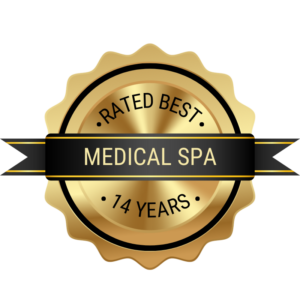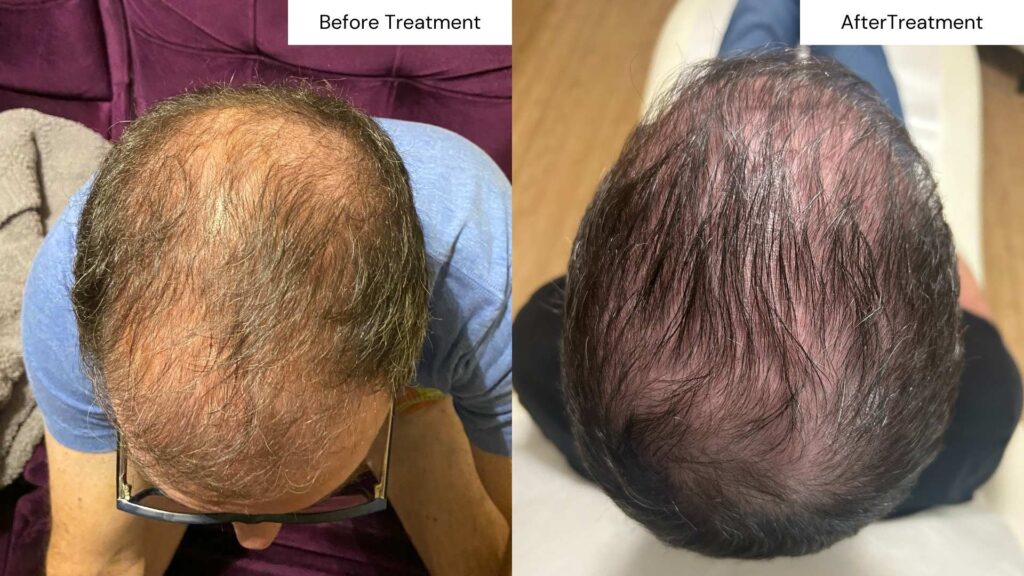FAQ
Most frequent questions and answers
Several studies have shown promising results for PRP therapy in treating hair loss, particularly androgenetic alopecia (male or female pattern hair loss). However, the results can vary from person to person, and not everyone will experience the same level of improvement.
If you’re considering PRP therapy for hair loss, during your consultation we’ll discuss your options and determine if PRP might be suitable for you.
The success of PRP therapy for hair regrowth may depend on factors such as the underlying cause of hair loss, the severity of the condition, and the individual’s overall health.
It’s important to remember that when treating hair loss there are a number of options such as topical minoxidil and finasteride. The best way to find out if the treatment is worth it for you is to schedule a consultation with our team. We’ll review your specific situation and recommend treatment options based on your goals and expectations.
After the initial PRP treatment, clients often undergo a series of sessions, typically spaced about one month apart. The exact number of sessions needed depends on the individual’s response to the treatment and the severity of the hair loss. After the initial treatment course, maintenance sessions might be necessary every 6 to 12 months to prolong the positive effects of PRP therapy.
It is essential to understand that PRP therapy is not a one-size-fits-all solution, and the treatment plan, frequency, and duration of the effects can vary significantly among individuals. Factors such as the cause of hair loss, the stage of hair loss, overall health, and adherence to the recommended treatment plan can all influence the duration of PRP therapy’s effects.
After starting PRP therapy, clients may begin to notice improvements in hair growth and density within a few months. Most people start to see results after 3 to 6 months of treatment.
PRP therapy typically involves multiple sessions, often spaced about one month apart. Once the initial treatment course is completed, maintenance sessions might be necessary every 6 to 12 months to sustain the improvements in hair growth and density.
o optimize the outcome of PRP therapy and gain a better understanding of what to expect in your specific situation, schedule a consultation with our team.
Several clinical studies have demonstrated that PRP therapy can lead to improvements in hair density, thickness, and overall hair growth. The treatment involves injecting concentrated platelets from the patient’s blood into the scalp, which release growth factors and proteins thought to stimulate hair growth and promote healing.
The overall effectiveness of PRP therapy for hair restoration is still a subject of ongoing research. Some individuals may experience significant improvements, while others may see little to no change in their hair growth.
It’s best to schedule a consultation with one of our professionals so that we can assess your health and condition to determine the best path forward.
- Avoid washing your hair for 24 hours after the treatment to allow the PRP to remain in the treated area for the maximum time possible.
- Avoid using harsh chemical hair products, including hair dyes, for at least 72 hours after the procedure.
- Avoid vigorous physical activities, heavy exercise, and sweating for at least 24-48 hours after the treatment, as this could increase blood flow to the scalp and interfere with the healing process.
- Avoid direct sunlight and excessive heat exposure to the scalp for the first few days after treatment. Wear a hat if you need to be outdoors.
- Avoid alcohol and smoking for at least 72 hours after treatment, as these substances can hinder the wound-healing process and potentially reduce the effectiveness of PRP therapy.
- Avoid taking anti-inflammatory medications, such as ibuprofen or aspirin, for a few days after the procedure, as they may counteract the effects of the growth factors released by the platelets. Consult with your healthcare provider before stopping or altering any prescribed medications.
- Avoid massaging or rubbing the treated area for at least 24 hours to prevent irritation or inflammation.
We always provide specific post-treatment care instructions and guidelines, as individual recommendations may vary.
Infection: Although rare, there is a risk of infection at the injection sites. Proper sterilization techniques and aseptic procedures can help minimize this risk.
- Pain and discomfort: Some patients may experience mild pain, discomfort, or tenderness at the injection sites, which usually subsides within a few hours to a couple of days.
- Swelling and inflammation: PRP injections may cause temporary swelling or inflammation in the treated area. These symptoms typically resolve within a few days.
- Bleeding and bruising: As with any injection, there is a risk of bleeding and bruising at the injection sites. These effects are generally mild and resolve on their own.
- Allergic reaction: Although rare, since PRP is derived from the patient’s own blood, there is still a small risk of an allergic reaction to the substances used during the procedure, such as local anesthetics or anticoagulants.
Prior to any procedure, you’ll have a consultation with our team to assess your health, condition, and goals. We’ll help you determine whether a treatment is both right and safe for you.





